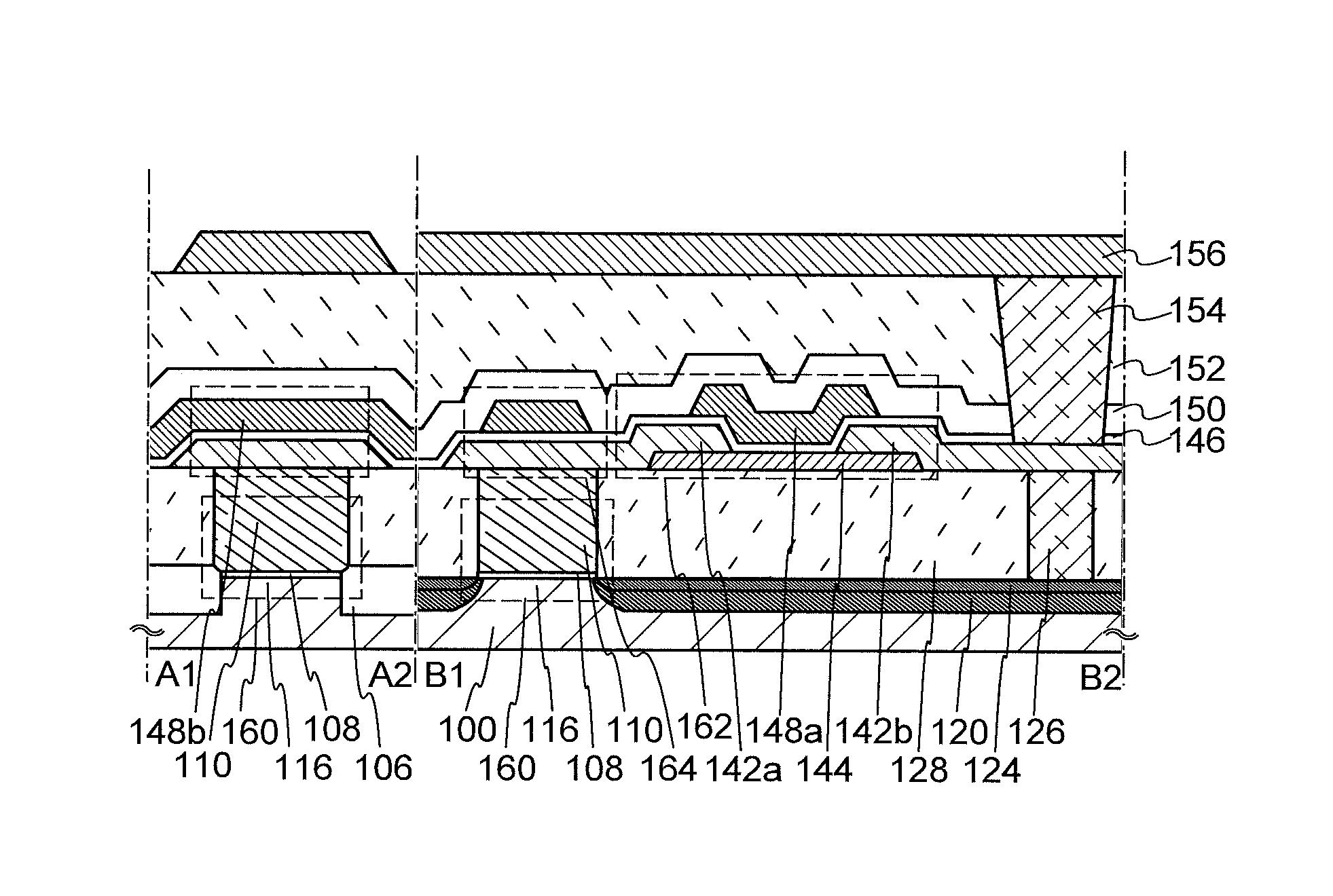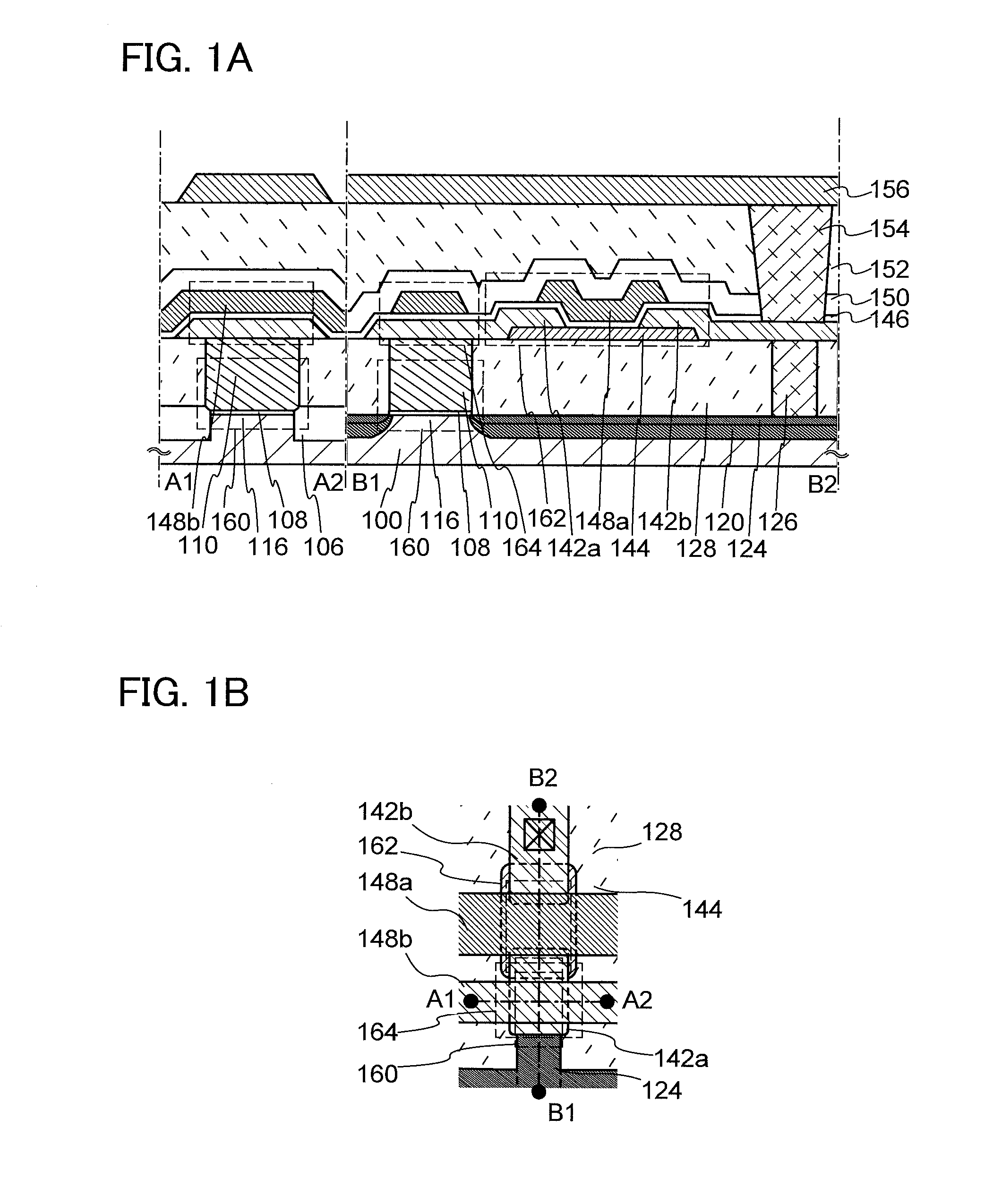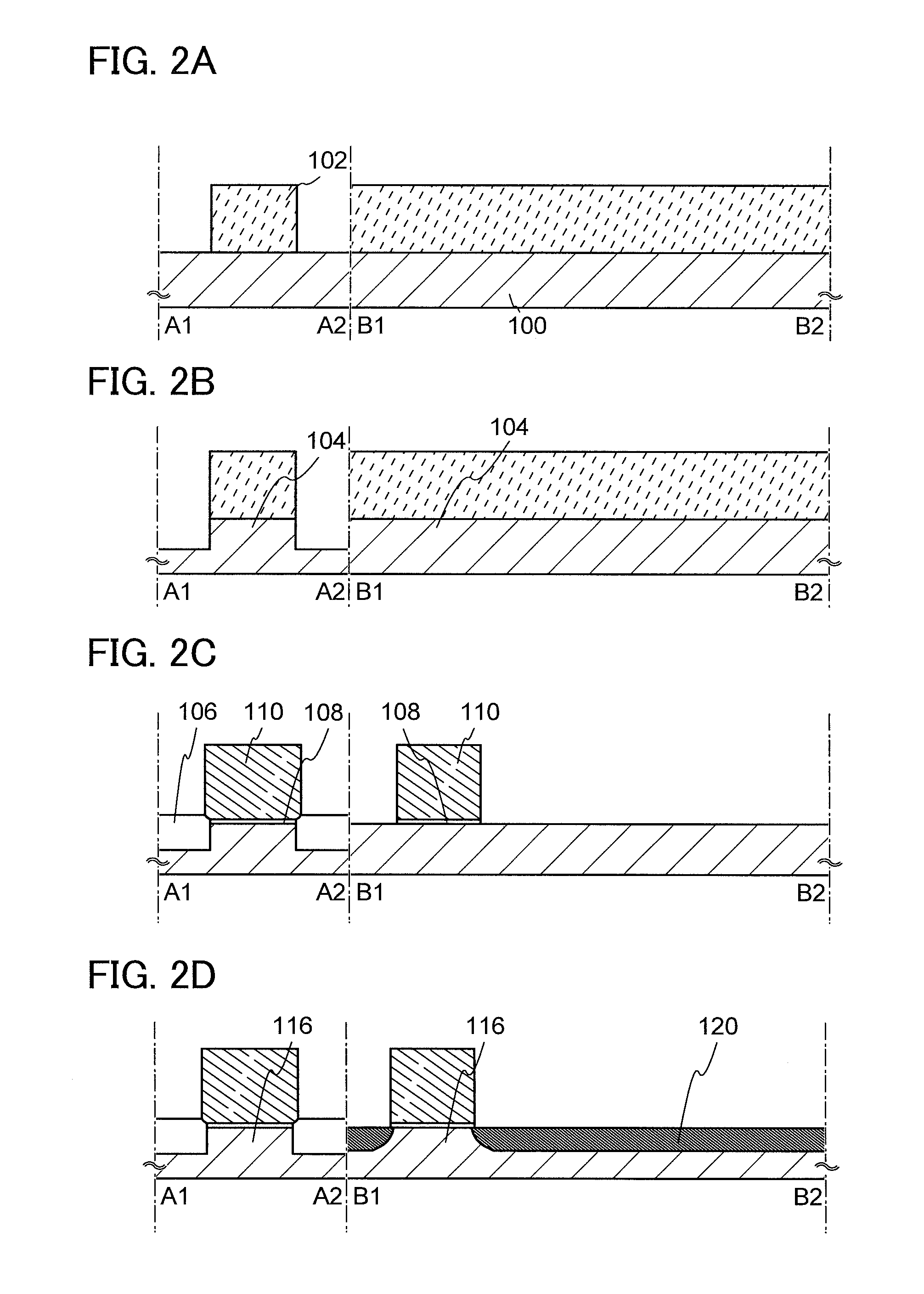Semiconductor device
a semiconductor and device technology, applied in the field of semiconductor devices, can solve the problems of extremely long data retention time and remarkable low leakage current, and achieve the effect of increasing the degree of integration of the semiconductor devi
- Summary
- Abstract
- Description
- Claims
- Application Information
AI Technical Summary
Benefits of technology
Problems solved by technology
Method used
Image
Examples
embodiment 1
[0043]In this embodiment, a structure and a manufacturing method of a semiconductor device according to one embodiment of the present invention will be described with reference to FIGS. 1A and 1B, FIGS. 2A to 2D, FIGS. 3A to 3D, FIGS. 4A to 4D, FIGS. 5A and 5B, FIGS. 6A and 6B, and FIGS. 7A-1, 7A-2, and 7B.
[0044]FIGS. 1A and 1B illustrate an example of a structure of a semiconductor device. FIG. 1A is a cross-sectional view of the semiconductor device. FIG. 1B is a plan view of the semiconductor device. In FIG. 1A, the cross section A1-A2 is perpendicular to the channel length direction of a transistor, and the cross section B1-B2 is parallel to the channel length direction of the transistor. The semiconductor device illustrated in FIGS. 1A and 1B includes a transistor 160 including a first semiconductor material in a lower portion, and a transistor 162 including a second semiconductor material in an upper portion. FIGS. 1A and 1B show that the semiconductor device including one tra...
embodiment 2
[0183]In this embodiment, an application example of a semiconductor device according to one embodiment of the present invention will be described with reference to FIGS. 8A to 8C and FIGS. 9A to 9C. Here, an example of a storage device will be described. Note that in circuit diagrams, “OS” is sometimes written beside a transistor in order to indicate that the transistor includes an oxide semiconductor.
[0184]FIGS. 8A to 8C are circuit diagrams of semiconductor devices each of which can be used as a storage device and includes a plurality of semiconductor devices (hereinafter also referred to as memory cells) illustrated in FIG. 7A-1. Each of FIGS. 8A and 8B is a circuit diagram of a NAND semiconductor device in which memory cells are connected in series. FIG. 8C is a circuit diagram of a NOR semiconductor device in which memory cells are connected in parallel.
[0185]The semiconductor device in FIG. 8A includes a source line SL, a bit line BL, a first signal line S1, m second signal li...
embodiment 3
[0214]In this embodiment, application of the semiconductor device described in any of the above embodiments to an electronic device will be described with reference to FIGS. 10A to 10F. In this embodiment, examples of the electronic device to which the above semiconductor device is applied are a computer, a mobile phone (also referred to as a cell phone or a mobile phone device), a personal digital assistant (including a portable game machine and an audio reproducing device), a camera such as a digital camera and a digital video camera, electronic paper, and a television device (also referred to as a television or a television receiver).
[0215]FIG. 10A illustrates a laptop personal computer that includes a housing 701, a housing 702, a display portion 703, a keyboard 704, and the like. The semiconductor device described in the above embodiment is provided in at least one of the housing 701 and the housing 702. Thus, it is possible to realize a laptop personal computer in which data i...
PUM
 Login to View More
Login to View More Abstract
Description
Claims
Application Information
 Login to View More
Login to View More - R&D
- Intellectual Property
- Life Sciences
- Materials
- Tech Scout
- Unparalleled Data Quality
- Higher Quality Content
- 60% Fewer Hallucinations
Browse by: Latest US Patents, China's latest patents, Technical Efficacy Thesaurus, Application Domain, Technology Topic, Popular Technical Reports.
© 2025 PatSnap. All rights reserved.Legal|Privacy policy|Modern Slavery Act Transparency Statement|Sitemap|About US| Contact US: help@patsnap.com



